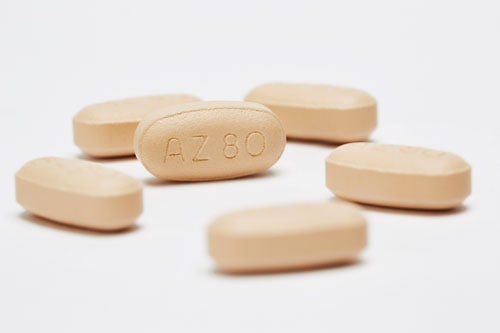
AstraZeneca’s lung cancer drug Tagrisso is its first medicine to be approved in China under the country’s new Priority Review pathway.
Tagrisso (osimertinib) – a third-generation EGFR inhibitor – has been approved by the China Food and Drug Administration (CFDA) as a second-line treatment for EGFR T790M mutation-positive metastatic non-small cell lung cancer (NSCLC), an indication for which it is already approved in the US and Europe. The drug made sales of $423m last year, its first on the market fuelled by its hefty $150,000 list price in the US.
As the second largest world market China is seen as a big opportunity for Tagrisso and AstraZeneca’s (AZ) first-generation EGFR inhibitor Iressa (gefitinib) – which is already on the market there – and central to the company’s ambitions to build its emerging markets business in the coming years.
The company notes that lung cancer is the most common form of cancer and the leading cause of cancer-related deaths in China, and that around 30-40% of Asian patients with NSCLC have the EGFR mutation at diagnosis.
Moreover, nearly two thirds patients whose disease progresses after treatment with a first-line EGFR inhibitor – such as Iressa, Roche/Astellas’ $2bn-a-year Tarceva (erlotinib) and Boehringer Ingelheim’s Giotrif (afatinib) – develop the T790M mutation and so are eligible for Tagrisso treatment.
“This is an important step forward for Tagrisso and a significant opportunity to bring a breakthrough medicine to patients with NSCLC in China, where EGFR mutation rates are some of the highest in the world,” said AZ’s chief medical officer Sean Bohen.
The rapid review and approval “signal the urgent need for new, targeted treatments with the potential to address specific types of cancer with high incidence rate and significant unmet medical need in China”, said AZ in a statement.
“They are also a recognition by the CFDA of the accelerated reform of China’s regulatory framework to benefit Chinese patients,” it continued.
With AZ’s position in immuno-oncology scaled down somewhat given several delays for PD-L1 inhibitor durvalumab leaving it now vying for fifth place in the market, Tagrisso has assumed much greater importance at the company. CEO Pascal Soriot said recently that the potential for the drug in Asia is “almost as big as immuno-oncology” for the company.
Moving Tagrisso from second- to first-line use will be key to get the biggest impact from the drug, and to that end AZ is making progress. Last December, AZ reported head-to-head data from a trial of Tagrisso against chemotherapy in first-line NSCLC patients with the T790M mutation, which showed that the drug reduced the risk of disease progression by 70% and improved progression-free survival (PFS) by almost six months.
Analysts at Credit Suisse predicted that Tagrisso could reach sales of almost $2bn in 2020, providing it eventually gets approved for first- as well as second-line NSCLC therapy.




